At long last, the time had come to leave the boatyard. Late on a Friday afternoon, the launch crane rumbled along and transferred Emerald from her support cradle to the slings. The yard is closed over the weekend, and allows boats to hang in the slings during that time before launching on Monday. We felt excitement bubbling at being so close to escape, but we had one major job to complete. When we Coppercoated in April, we weren’t able to access the patches underneath the cradle supports nor below the keel. The two days in the slings would give us access to these areas with sufficient time for applying and drying the product.
We’d booked the crane a week ago, thinking surely there’d be no risk from wet weather in the middle of May. However, on Thursday, the weather forecast was showing a chance of light rain for Friday night. We laughed. What else could we do?
Thankfully, it was just the forecast gods messing with us. The rain stayed away and by Saturday lunchtime the job was finished. After a busy week of preparing for launch, the water tanks were full, as were the fuel tanks. We had gas for at least 6 months and the food stores were groaning. There was nothing else to do until Sunday evening when we would lightly sand the Coppercoat. With this unexpected free-time, we rewarded ourselves with a meal out and a last Faro wander.
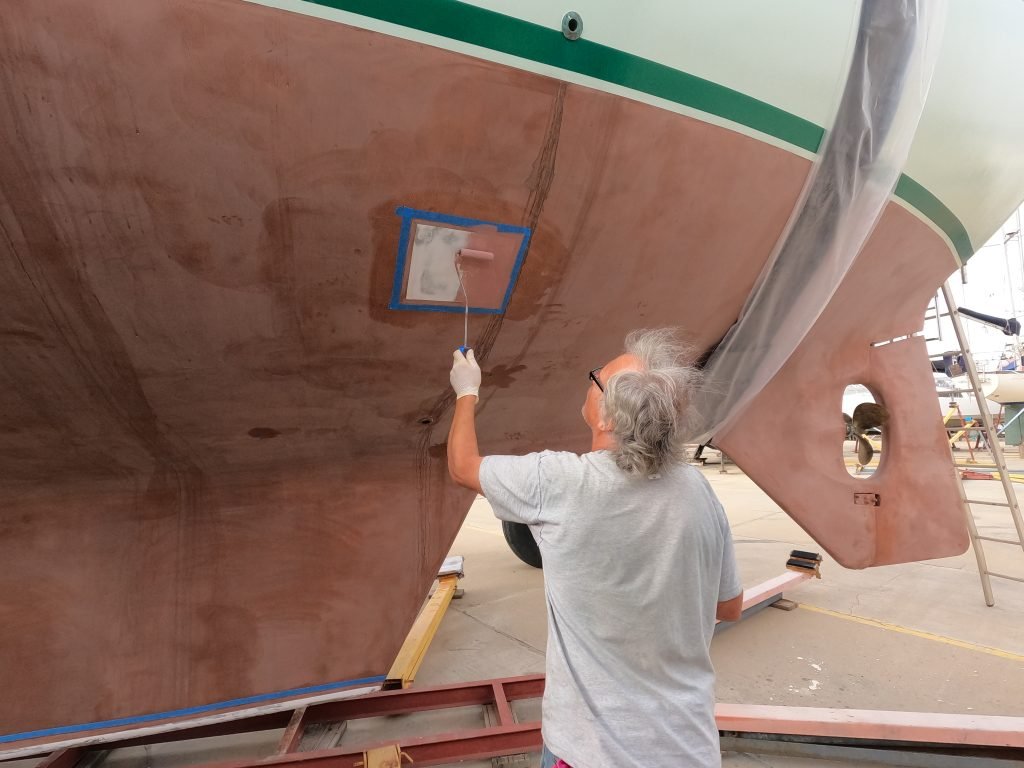
How Long Were We In The Yard?
Emerald was lifted out on the 11th of June 2021, giving us a total time there of a year minus 19 days. It was significantly longer than the way over-optimistic 5 months that we initially told the yard we’d be there for. Ah, hindsight. However, in that time we achieved a LOT. The most time consuming work was on the hull. Her battle scared topsides were faired and repaired, and to suit her name, Emerald is now a glacier green colour. To keep the paintwork looking good, we added a stainless bow protector. Below the waterline Colin removed all the old antifoul by hand during the hot summer. The following spring we applied Coppercoat, hopefully allowing us to extend our time between lift outs. The teak cap rail was refreshed and an unknown about hole was filled, fixing a longtime leak.
There were essential engineering jobs to complete. These included replacing seacocks, installing new engine mounts and new steering cables. Then there were the unexpected jobs. A cracked forestay connector that needed replacing and the nastiest surprise, a new turbo unit for the engine. In addition, too numerous to mention smaller jobs were ticked off the eternal boat job list.
There’d been times of despair, and diverse new skills to get our heads around. There were times when the weather beat us, both with heat and rain. Having to wait 5 weeks in March/April to Coppercoat because it kept raining every week was a huge frustration. There were also times when we just had to down tools and escape the yard to have some fun, and to remind ourselves what we were doing this for. But now at long last it had come to an end, our reward was firmly in sight.

Early Monday Morning
On Monday morning we’d been up 2 hours by the time the launch crane grumbled its way back to life at 8:30am. Minutes later our beautiful boat was trundling her way towards the water. The moment of truth had arrived – would she float?
It’s an anxious time for all boat owners and the responsibility was all ours. We’d checked everything we could think of to check including engine tests, and opening and closing the seacocks. However, there were just some things we couldn’t know until water surrounded Emerald’s hull again.
Down she went until she was resting on the water, but still supported by the slings. Colin reported back from inside: no leaks. They could remove the slings.
We scurried about to release the rope tying the slings together. It was to be a bittersweet moment. The joy of leaving tinged with dismay as my phone fell out of my pocket as I leant over the guardrail to reach a knot. It said goodbye with a plop as it hit the water, sinking to live forever in the murky water of the boatyard slip. I could easily replace the phone numbers and the phone was old and clunky, but what stung was losing the photos that I hadn’t backed up. 18 years of living on a boat and one year on the hard had made me slack. Argh! But, there was no time for being annoyed with myself, as the guide boat was ready to lead us down the channel to deeper water.

Time to Leave the Yard
The engine started first turn and we were floating. We were free! Well, mostly free. Emerald was to keep us busy by throwing a few snags our way.
We didn’t travel far that first day, just a couple of miles from the yard is a large pool opposite Faro. This would do whilst we looked into the problems.
The most obvious snag was that our main ship’s GPS had decided it wanted to stay in the boatyard. As we motored away, I noticed the speed over ground wasn’t changing, nor the distance travelled. At that moment it wasn’t critical as we use Navionics on a tablet for navigation, however, the ship’s GPS is our tried and trusted anchor alarm; we’d need to find an alternative until we could fix it.
Oh Dear, We’re Leaking
More urgent than the GPS were the small dribbles of seawater that were gathering in the bilge. We were leaking on three fronts!
Leak One
First was the propeller shaft seal which was kind of expected. After a period of not being used, it takes a while for the smooth carbon faces of the seal to completely bed in again. Even the instruction manual mentions it. We’d have to live with a few drips an hour until we used the engine again.
Leak Two
Next was the rudder gland. The rudder connects to the steering gear via a stainless steel shaft that pokes up through the hull under the aft bed. Wadding and grease is packed around the shaft to keep any water out. But water wasn’t staying out as there was a small drop of it bubbling out. Most likely the grease had dried out, probably due to the heat in the yard. We kicked ourselves for not thinking of refreshing the grease before launch, but it was an easy fix in the water.

A few years ago we’d fitted a remote greaser to the rudder shaft. This holds a reservoir of grease and connects to the stern gland via a plastic pipe. Turning a knob squeezes fresh, sticky grease down the pipe, forcing it around the gland. So all we had to do was dismantle the bed and turn the knob. That done, we regularly checked for water over the next few hours but it stayed dry. We’d sealed the leak and fix 2 was complete.
Leak Three
The third leak was from our log. This is a plastic tube with a paddle on the end that pokes out of a hole in the hull. The question was, why was it leaking? Had the slings damaged it during the launch? If we took it out, there would be a momentary indoor fountain before we got the blanking plug in place. In the end, Colin pulled it partway out and checked the O-ring. A bit of grease around it and back in it went. No more leaking.
No Rest For the Sailors
Besides the leak busting, there were other jobs demanding our time. First was launching the dinghy. Would the outboard start after a year of no use? Amazingly it fired on the second pull! We’d got so used to the previous engine never starting we were in shock. We took a celebratory lap of Emerald, seeing for the first time how her new paintwork looked now she was on the water. We are definitely biased, but we both agreed she looked beautiful.
In order for Emerald to sit correctly in the slings, we’d had to take the wind generator down. So, before the wind was due to pick up in the afternoon, that needed to go back up. It was a precarious job with Colin balancing on a ladder strapped to the arch, making sure he didn’t drop the heavy generator. I had the job of putting each of the bolts in place without dropping any into the sea. One thing lost to the sea was enough for today.
The wind picked up as expected and it was a choppy afternoon due to wind over tide. Despite the relief of a successful launch, I was down about my phone and the faff of sorting it out. We had fizz chilling in the fridge to celebrate with, but neither of us felt like it. Instead we sat and watched a lovely sunset as the wind began to ease and had an early night. Rock and roll life eh? But, don’t worry, the fizz didn’t remain in the fridge for much longer!
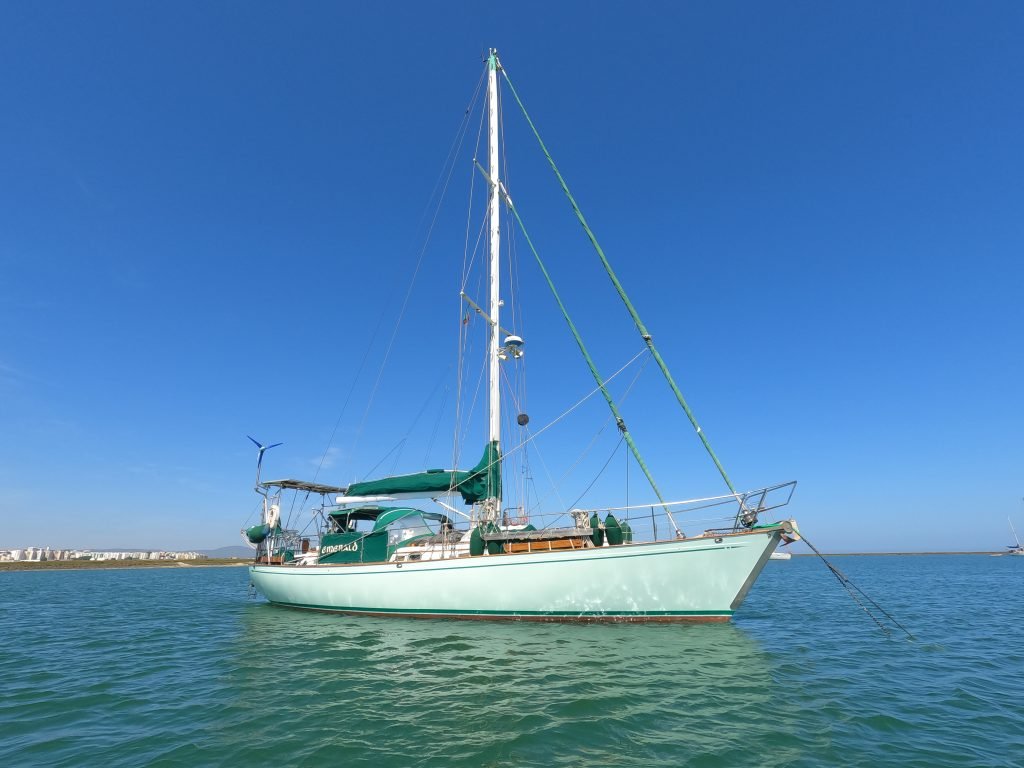
Off to Culatra
After a night anchored off of Faro, we moved down to Culatra for a few days. We made the most of the westerly breeze by unfurling the foresail to sail gently down the Canal de Faro. We never expected to be sailing on our second day of freedom and it was wonderful.
It was only 3 miles before we reached the 90 degree turn towards Culatra. This put tide against us and there wasn’t enough wind to counteract it. We were going nowhere. So, engine on, which gave the propeller shaft seal the time it needed to bed in. By the time we arrived at the anchorage, the shaft seal drip was gone. The last of the leaks was fixed.
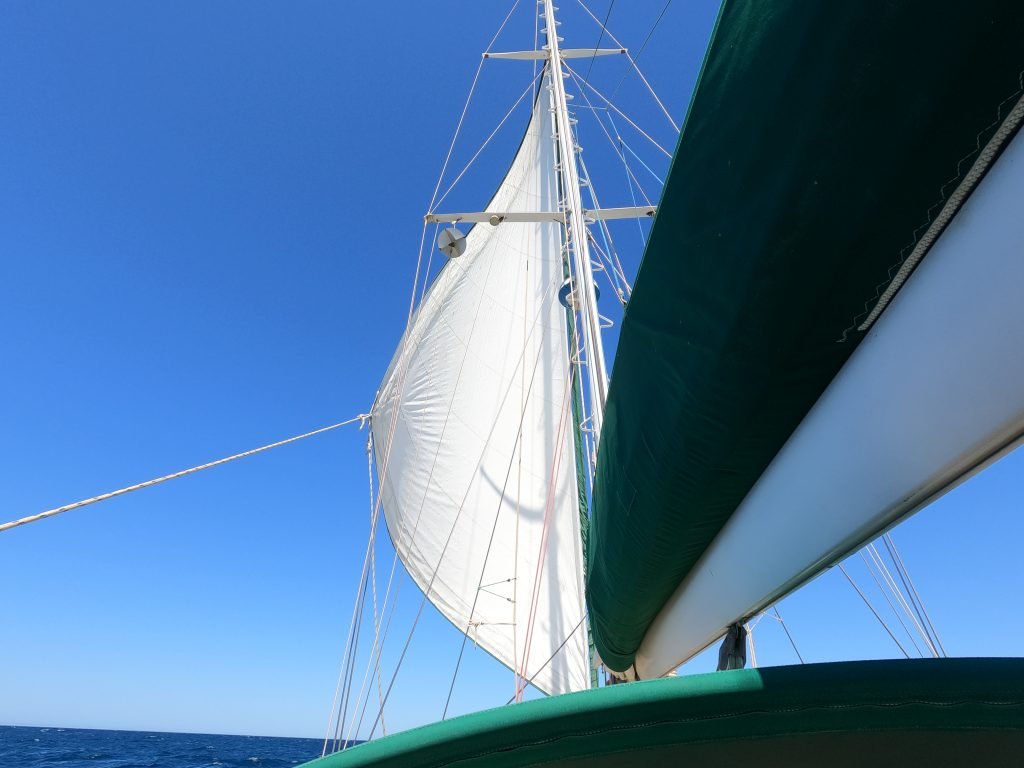
The GPS Problem
With the leaks fixed, it was back to the anchor alarm problem and the faulty GP32.
What’s an anchor alarm?
For the non-sailors reading, this is an alarm that uses Global Positioning Satellites (GPS) to monitor our position from a fixed point. When we stop somewhere, we create a waypoint where we dropped the anchor. The alarm uses this waypoint and a set distance from it, and triggers when the boat goes outside of that range. When we anchor, we don’t expect to drag, but there’s always a risk. Extreme tide and wind could trip the anchor, or another boat drags into us and takes us with it. The alarm helps us sleep peacefully at night, knowing we’ll be woken if there’s a problem.

We like using the ship’s GPS as an anchor alarm for a number of reasons. Firstly, it’s simple but is dedicated to its job. The power supply is constant and low, so it doesn’t drain the batteries even when left on permanently. It also has a constant GPS signal from an external antenna, reducing the possibility of losing a position fix.
As a temporary alternative we used an anchor alarm app that runs on a mobile phone. We tried a couple of apps, but were glad to return to the GPS due to some major downsides. The main issue was the app alarm going off when there wasn’t a problem. This was due to it regularly losing the GPS signal because of being inside, which was annoying during the night. Also, just moving the phone around the boat, because we were using it for many purposes, could trigger the alarm due to the distance moved. We found the app drained the phone battery quickly and we had to remember to plug it in and place it near us overnight.
Tracing the Problem
We have a choice of GPS units on Emerald. The ship’s GPS is a Furuno GP32, installed at the chart table and which feeds all the other instruments. It also acts as our anchor alarm and had saved us from a potential problem in Scotland in 2010. Back then we’d inadvertently anchored in kelp when a not-forecast change in wind direction occurred late at night. This turned Emerald around, the anchor slipped and her stern was left just a few meters off a rocky island. You can read about it here. The GP32 is a basic model, but it’s simple, which we like, and until now had worked reliably. For redundancy, we also have two handheld Garmin GPS devices. These can provide a GPS signal to our other instruments, such as the radio, but not to the GP32.
We searched on Google for possible solutions. Our first thought was that the GP32 had been made obsolete by a date roll over. Unfortunately, Furuno, the manufacturer, was not providing a software upgrade for our model. Thankfully, digging deeper we learnt that a factory reset on the unit would make it work again, albeit with the wrong date. We could live with it thinking it’s in 2002.
However, after a reset, it still couldn’t see any satellites and hence had no position. Dismantling the instrument panel came next to access the back of the GP32. We plugged in one of the Garmin GPS aerials into the GP32 input socket. The signals were weak but it could now see some satellites. Hurrah, we didn’t need to buy a replacement. The suspect was now either a wiring fault or the antenna. So, the next step was to tracing the wiring, which meant dismantling more things.
The Culprit: A Damaged Wire
Eventually we traced the fault to damage to the wire from the external antenna. Perhaps where it wrapped around the solar arch had created friction. But rather than just replace the wire, we decided to replace the whole antenna unit with an after market model.
A few days later, the new antenna had arrived. Colin installed it and ran the cable through the boat to the GP32. After firing it up, its screen displayed a huge array of satellites, all with a strong signal. We were back to having an anchor alarm we could trust. As well as a phone anchor app, we’d been using one of the handheld Garmin devices as an anchor alarm. But it kept briefly losing the GPS signal, which triggered the alarm. This is not funny in the middle of the night. We were relieved to have our tried and tested, has saved us before, anchor alarm back working again.
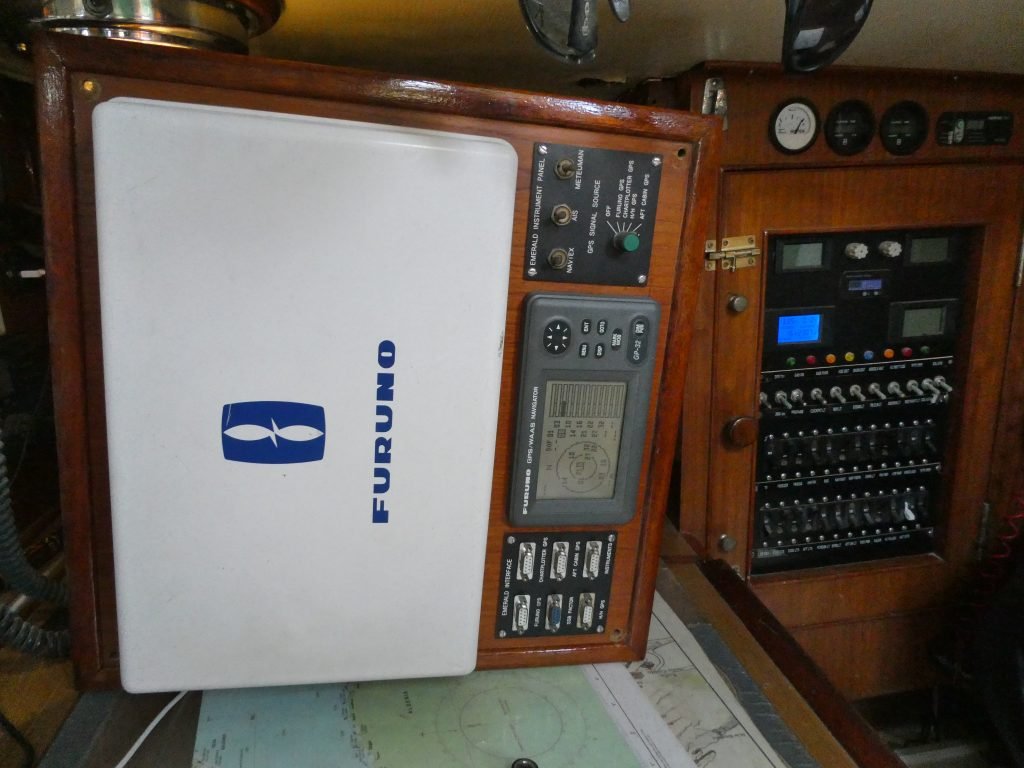

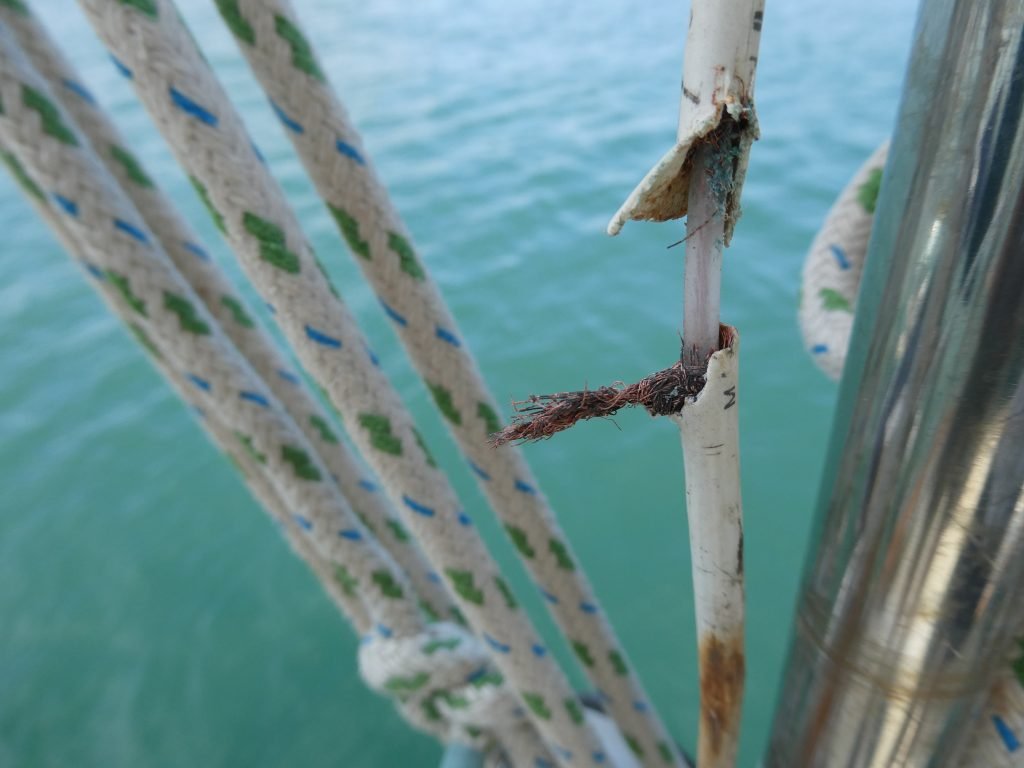
It Wasn’t All Work
Suffice to say, it wasn’t all work, fix, work. I reacquainted myself with the gorgeous tractors of Culatra (if you’d like to know more about the island of sand, read here). We walked the boardwalk and wandered along the beautiful beach down to Farol and back. We also took a trip to Olhão to trade in some scrap bronze. It was good to get something back from old seacocks, the toilet and the former stainless forestay fitting. Best of all was a catch-up with friends Vic and Marge. We first met them in Lagos when we came south in 2013.
It wasn’t a long stay in Culatra as we took advantage of a day of easterlies to blow us on west.
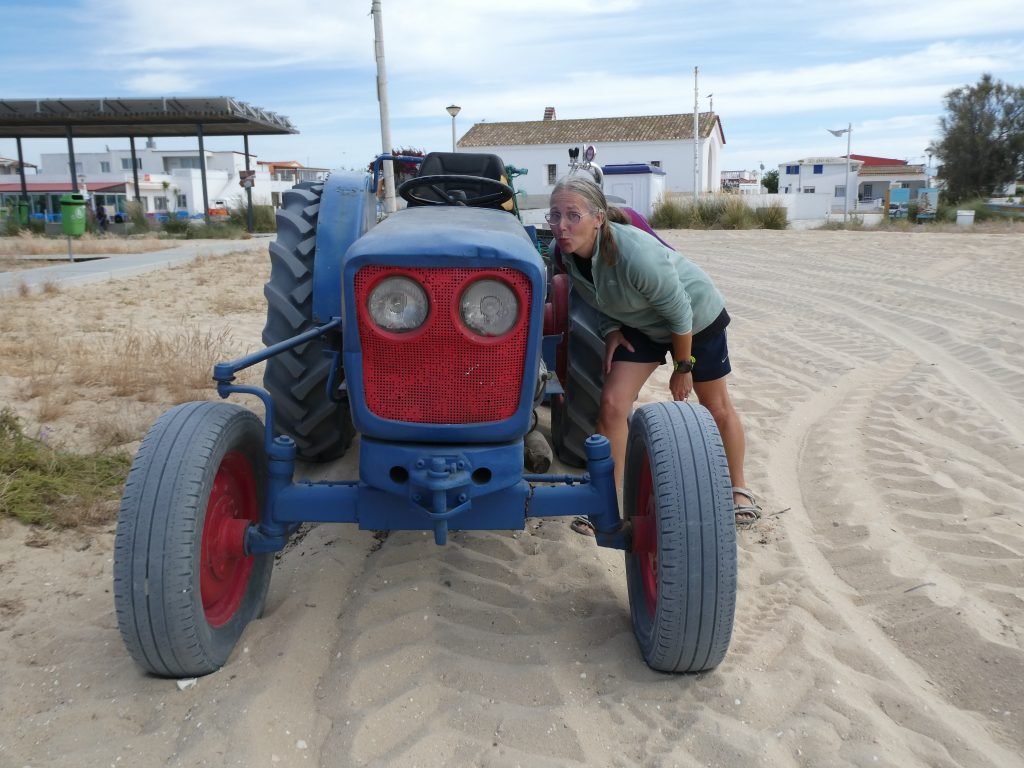

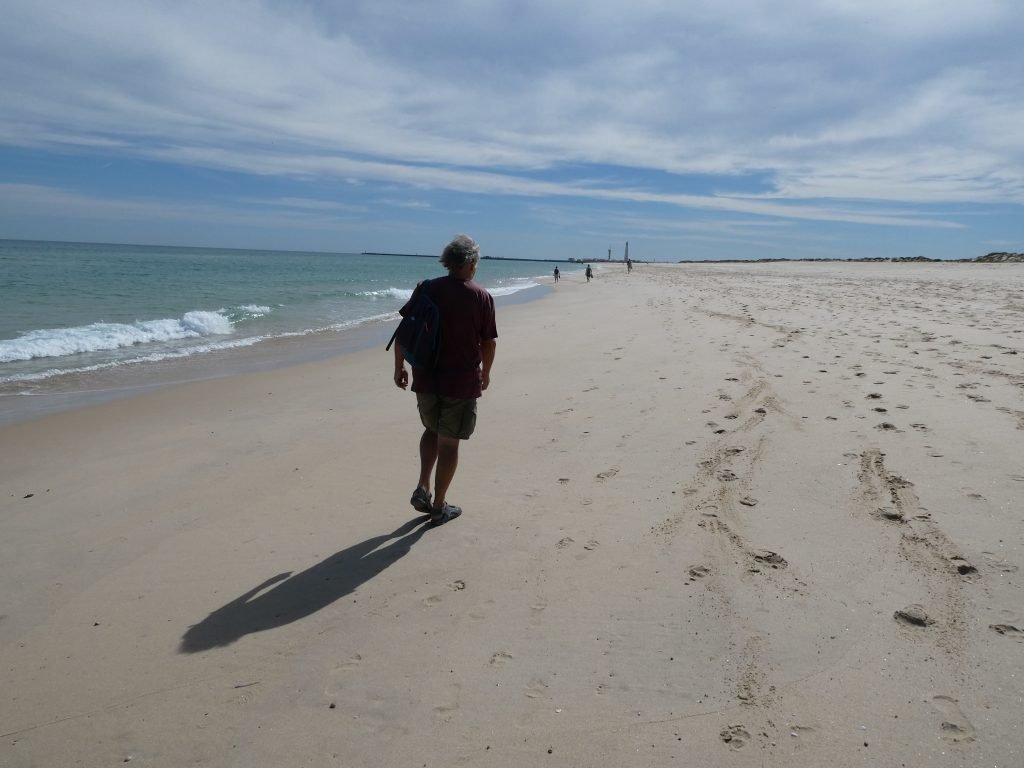

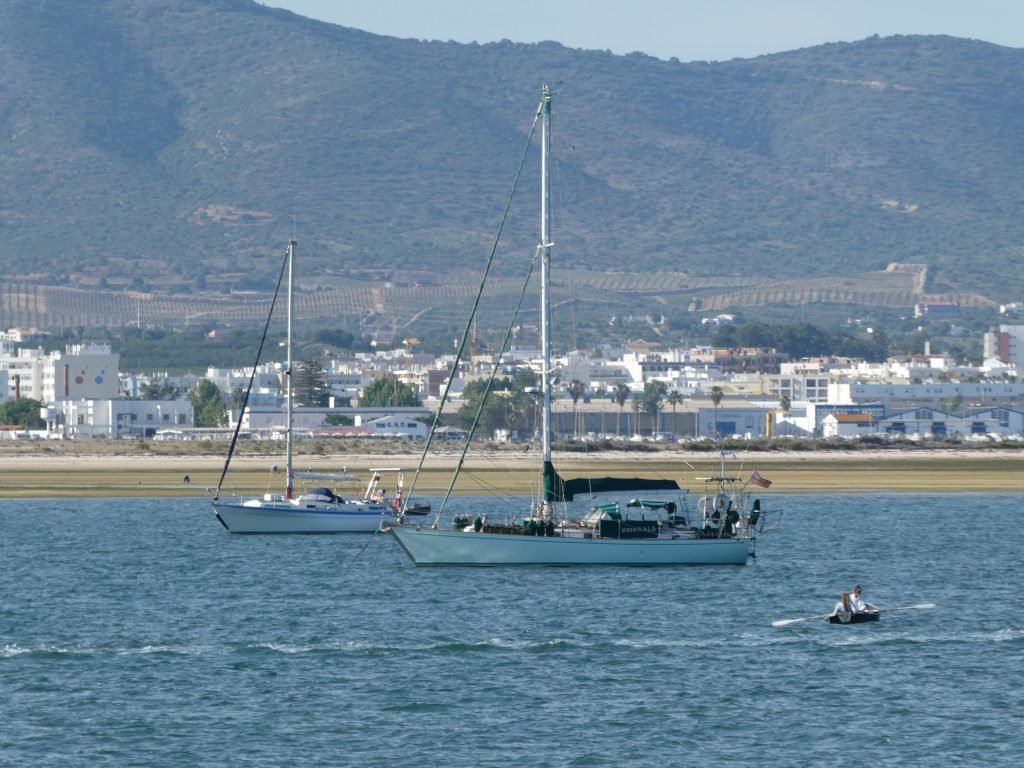
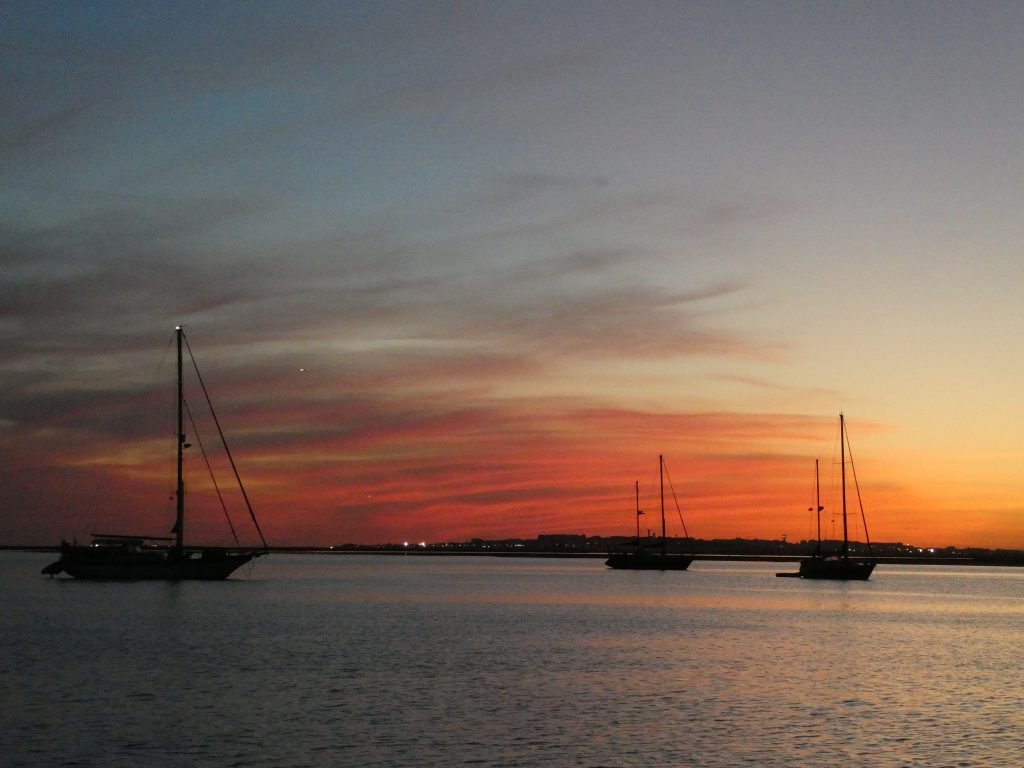
The Boatyard Broke Us
The almost-a-year in the boatyard sapped a lot out of both of us. A sailing friend quite correctly described the boatyard as the sailor’s purgatory; a necessary evil to compensate for the good things of a salty life. However, it wasn’t just the difficulty of the boat work and the unexpected problems, nor the constant pressure on our finances that wore us down. I’m blaming it on a critical mass of lots of things, some of which had nothing to do with boat work. Life problems that were individually manageable until mixed together all at once and topped off with issues with the yard.
And besides the rough times there were many good moments: making new friends, some time for land travel, and the experience of living in Faro. Not least was the completion of so many jobs on Emerald all by our own hands. This is definitely something we are very proud of. Especially now we have our reward of seeing her floating safely back on the water, knowing we did good.
Suffice to say, being back afloat has slowly brought back to me the things I enjoy about living on a boat. The first night at anchor I slept so peacefully and longer than I had in some time.
Amongst other things, I lost my mojo for keeping this blog updated. Three weeks after launch I felt a spark of something that led to this blog. It will hopefully be the first in a return to documenting the travels and adventures of our life on Emerald.
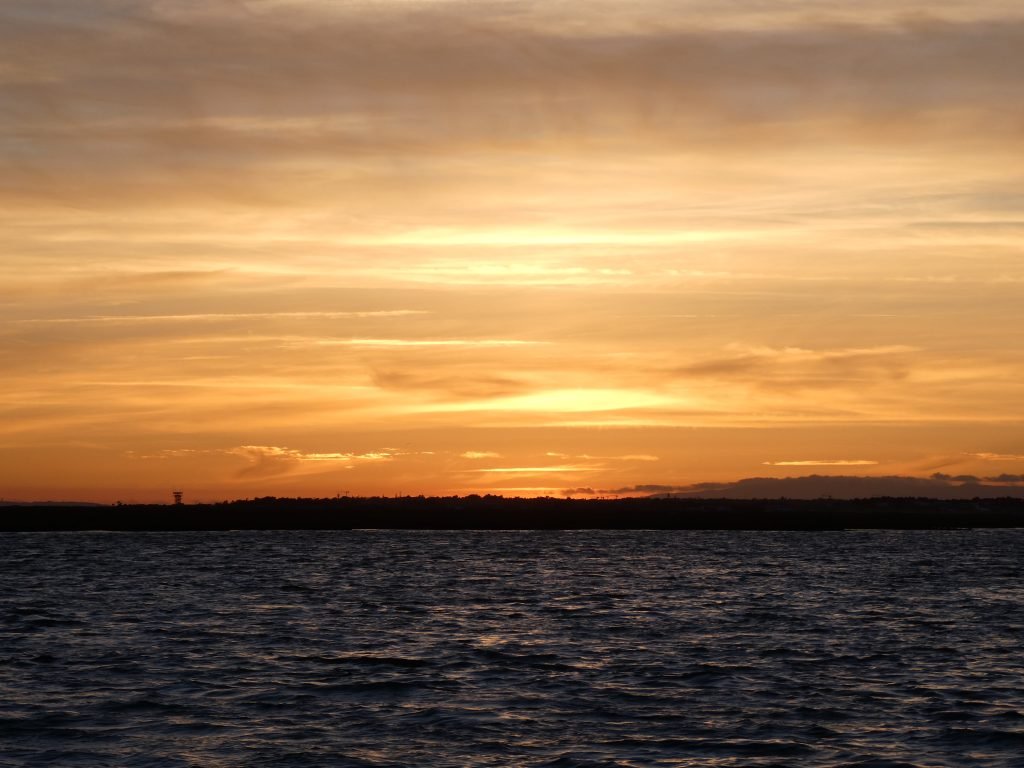
The Social Media Bit: Want to Follow Us?
If you’d like to follow us on other social media platforms (Facebook, Instagram and YouTube), you can do so by using these links:
Or use the link below to track our voyage on NoForeignLand.com.
And finally, you can sign up to receive email notifications of new blogs using the subscribe box at the bottom of this page.
Thank you from Nichola & Colin


